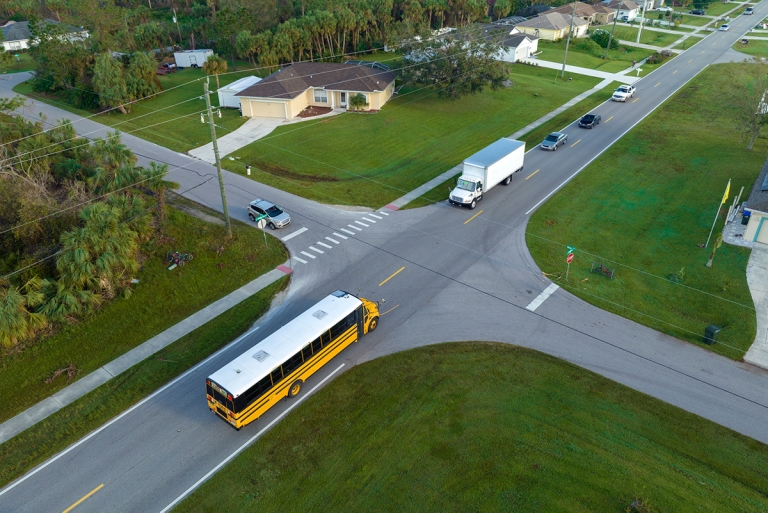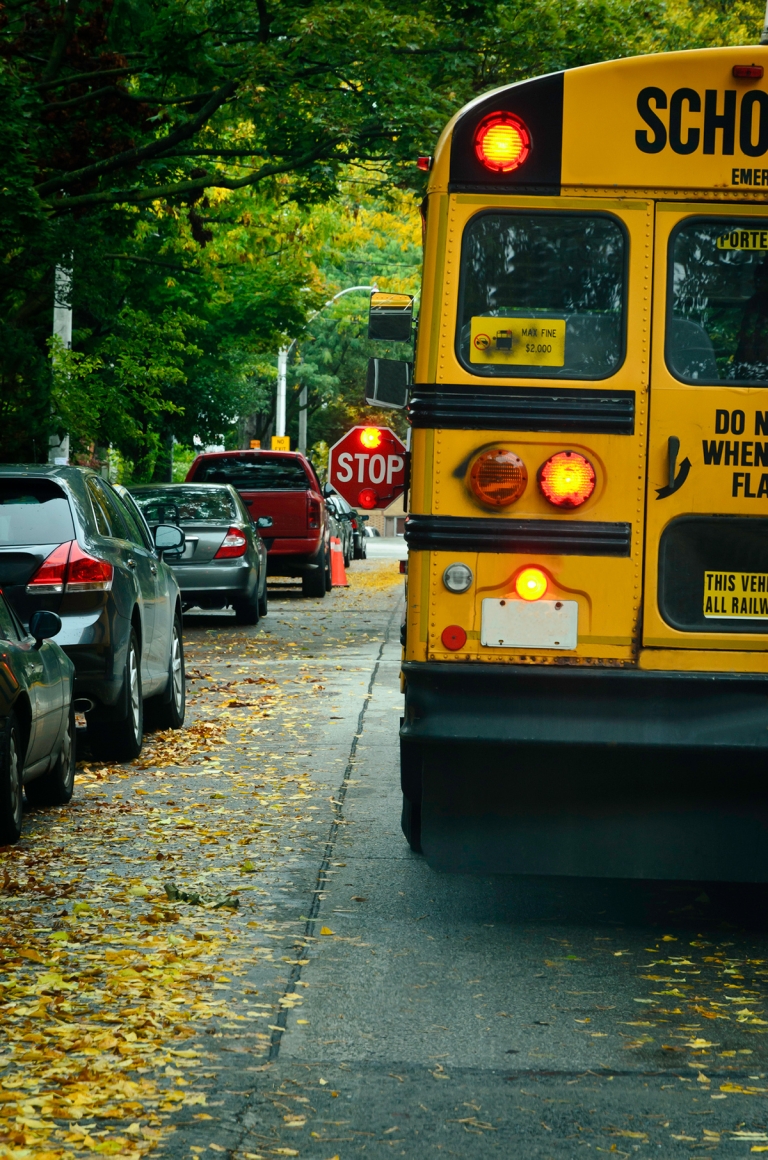
School Bus Safety on the Road: Essential Tips for All Drivers

Every morning and afternoon, school buses traverse our neighborhoods, ensuring the safe transportation of millions of children to and from school. These big yellow vehicles, adorned with flashing lights and stop signs, serve as a daily reminder of our collective responsibility to protect the youngest members of our community. Yet, despite their conspicuous presence, school buses have become the center of numerous tragic incidents, many of which are preventable. This article delves into the importance of driving safely around school buses, the rise in incidents due to distracted driving, and the urgent need for heightened awareness among both new and seasoned drivers.
The Basics of School Bus Safety
Understanding School Bus Signals
School buses are equipped with a system of lights and signs designed to alert drivers of their intentions. Yet, many drivers remain unaware or dismissive of these signals, leading to dangerous situations:
- Flashing Yellow Lights: These are a warning that the bus is preparing to stop. Drivers should slow down and be ready to stop.
- Flashing Red Lights and Extended Stop Sign: The bus has stopped to pick up or drop off children. Drivers must stop their vehicles and wait until the lights stop flashing and the stop sign is withdrawn before proceeding.
The Law and School Buses
Laws regarding stopping for school buses vary by state, but one principle remains consistent: when a school bus stops to pick up or drop off children, drivers in both directions must stop. There are exceptions on divided highways in some states, but the golden rule is always to err on the side of caution. Violations can lead to hefty fines, and more importantly, can endanger children's lives.
The "Danger Zone" Defined
The "Danger Zone" refers to the area ten feet around the bus where children are most at risk of being hit. Children entering or exiting the bus might not always be visible to drivers, especially if they are close to the bus. It's crucial for drivers to be especially vigilant and patient when in this zone.
Anticipating Stops and Maintaining Distance
School buses make frequent stops, and their routes are often predictable. Drivers familiar with their local school bus routes can anticipate these stops:
- Recognizing Bus Stops: Regular routes mean regular stops. If you see children waiting at a bus stop or a bus slowing down near a familiar area, be prepared to stop.
- Safe Distance: Always maintain a safe distance from a school bus. This gives drivers ample time to react if the bus makes an unexpected stop. Additionally, it provides a clearer view of children who might be near the roadway or preparing to cross the street.
Recent Tragedies and the Urgency for Caution
In recent years, a series of heart-wrenching incidents related to school bus stops have made headlines across the nation. States like Florida, Indiana, Mississippi, Pennsylvania, and Kentucky have all borne witness to the devastating consequences of momentary lapses in attention or judgment by drivers. These tragedies serve as a stark reminder of the vulnerability of children and the paramount importance of driver vigilance.
The U.S. Department of Transportation’s National Highway Traffic Safety Administration (NHTSA) has been at the forefront of addressing these concerns. Their emphasis on exercising caution and adhering to state laws when approaching a school bus or school crossing is not just a matter of legal compliance but a moral imperative. Every incident, every tragedy, underscores the need for a collective effort to raise awareness and ensure safety.
Public and Media's Role in Safety Awareness
The community's role in ensuring its youngest members' safety cannot be overstated. NHTSA actively calls upon the public and media to assist in educating communities about the dangers surrounding school bus stops. By highlighting the risks and promoting safe driving practices, we can collectively reduce incidents of stop-arm violations, where vehicles illegally pass a school bus with its stop-arm extended.
NHTSA's Deputy Administrator, Heidi King, took a proactive approach by issuing a video message addressing the recent accidents at school bus stops. In her heartfelt message, she urged motorists to recognize their role in the larger community and their responsibility every time they get behind the wheel.
Distracted Driving: A Modern Menace
The advent of smartphones and in-car entertainment systems has brought with it a new set of challenges on the road. Distracted driving, once limited to tuning the radio or attending to children in the back seat, has evolved into a far more dangerous activity with the proliferation of text messaging, social media, and other mobile applications.
Especially in areas with school buses and bus stops, the consequences of a momentary distraction can be catastrophic. A few seconds spent reading a text or changing a song might mean missing the flashing lights of a school bus or the sudden movement of a child crossing the road.
The message is clear: when driving, especially near school zones and bus stops, all distractions must be set aside. The safety of our children and the well-being of our communities depend on it.
Key Findings and Data Points: A Decade of Analysis
The NHTSA document “Traffic Safety Facts: 2006-2015 Data School-Transportation-Related Crashes” highlights the gravity of the situation; one must look at the numbers. Between 2006 and 2015:
- 1,313 individuals of all ages lost their lives in school-transportation-related crashes, averaging 131 fatalities annually.
- Of the 301 school-age children who tragically died in these incidents:
- 54 were occupants of school transportation vehicles.
- 137 were occupants of other vehicles.
- 102 were pedestrians.
- 8 were pedalcyclists.
These statistics paint a somber picture, emphasizing the need for immediate action and heightened awareness. The data also reveals that the most vulnerable times for accidents are between 6 to 7 a.m., 7 to 8 a.m., and 3 to 4 p.m. – the typical hours when children are commuting to and from school.

Tips for Drivers: Navigating the Road with School Buses
Driving safely around school buses isn't just about obeying the law; it's about ensuring the safety of our community's children. Here are some actionable tips every driver should keep in mind:
- Stay Alert in School Zones: School zones are typically marked with signs, flashing lights, or road markings. Reduce speed and be extra vigilant, as children can be unpredictable.
- Understand the "Danger Zone": Always be cautious in the ten-foot area around the bus. Children walking, playing, or gathering near these zones might not always be visible, especially if they're close to the bus.
- Never Pass a Stopped Bus: If a bus has its stop arm extended and red lights flashing, never attempt to pass it from either direction unless you're on the opposite side of a divided highway.
- Look Out for Crossing Guards and Safety Patrols: Respect and obey signals from crossing guards and student safety patrols.
- Be Patient: Remember, the few extra minutes you might take waiting behind a bus ensures the safety of children.
Driving is a Team Sport, and we are all on the same team.
Driving safely around school buses is a shared responsibility. Every driver, whether they're a parent, a teenager, or a seasoned motorist, plays a crucial role in ensuring the safety of children. The statistics and tragedies we've discussed underscore the importance of this issue. But beyond the numbers are real lives, families, and natural communities impacted.
As drivers, we have the power to make a difference. By staying informed, practicing safe driving habits, and spreading awareness, we can create safer roads for everyone. Let's collectively protect our children, uphold our community values, and ensure that every child reaches their destination safely.
